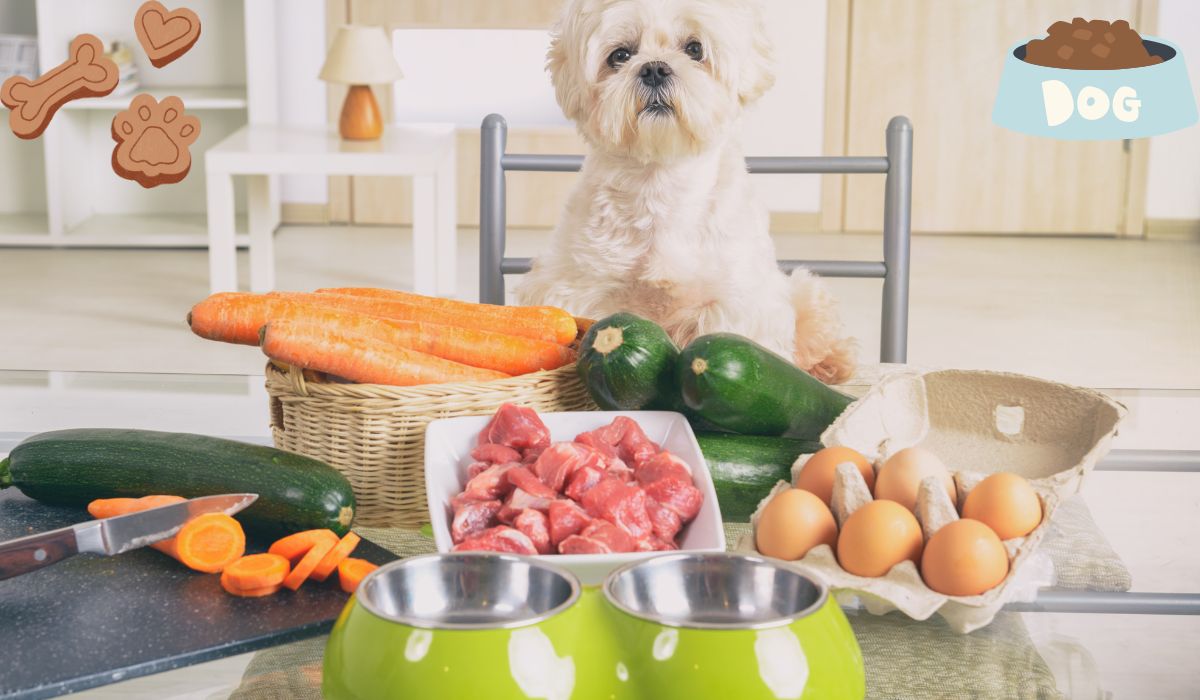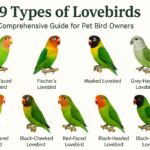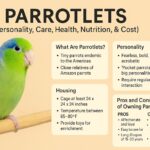Making homemade dog food can be a game-changer for your furry friend’s health. Many pet parents are turning to DIY meals to ensure their pups get the best nutrition possible. Homemade chow lets you control what goes into your dog’s bowl, avoiding fillers and preservatives often found in store-bought kibble. Plus, you can tailor the diet to your dog’s specific needs.
A study in the Journal of Nutritional Science found that dogs fed a fresh food diet had better digestive health and shinier coats. But it’s not just about tossing some chicken and veggies together. Balanced nutrition is key. The right mix of proteins, carbs, and fats keeps your pooch healthy and happy. A vet-approved recipe ensures your furry pal gets all the nutrients they need to thrive.
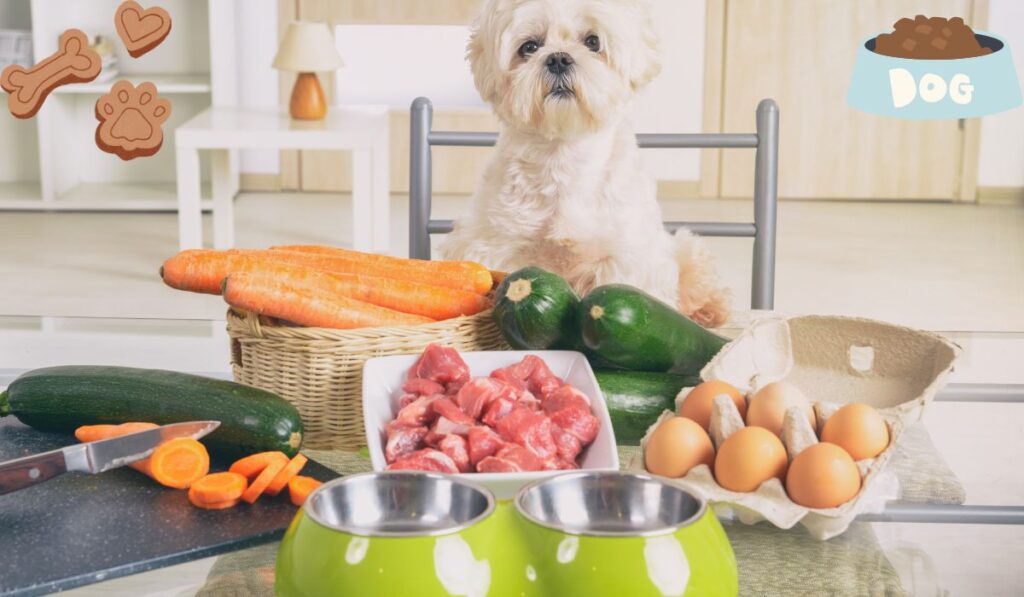
Key Ingredients for Homemade Dog Food
When it comes to making homemade dog food, choosing the right ingredients is super important. Let’s break down the key stuff you’ll need to keep your furry friend healthy and happy.
A. Protein Sources
Your pup needs lots of protein to stay strong. Here are some top picks:
- Lean meats: Chicken, turkey, and beef are great choices. They’re packed with nutrients and most dogs love them. A study in the Journal of Animal Science found that dogs fed a diet with 30% protein had better muscle mass than those on lower protein diets.
- Fish: Salmon, sardines, and cod are awesome for dogs. They’re full of omega-3s which are great for your dog’s skin and coat. Plus, they can help with joint health.
- Eggs: These little powerhouses are a complete protein source. They’re also easy to digest and can help keep your dog’s coat shiny.
B. Carbohydrate Sources
Carbs give your dog energy. Here are some good options:
- Brown rice: It’s easy on the tummy and full of fiber. It’s a great choice for dogs with sensitive stomachs.
- Sweet potatoes: These orange veggies are packed with vitamins and minerals. They’re also a good source of fiber.
- Quinoa: This super grain is high in protein and fiber. It’s a great choice if your dog needs to watch their weight.
C. Vegetable Options
Veggies are full of vitamins and minerals your dog needs. Try these:
- Carrots: These crunchy treats are great for your dog’s teeth and full of vitamin A.
- Green beans: Low in calories but high in fiber, these are perfect for dogs who need to slim down.
- Spinach: This leafy green is packed with iron and other good stuff. Just don’t go overboard – too much can cause tummy troubles.
D. Healthy Fats
Fats are important for your dog’s health. Here are some good ones:
- Olive oil: It’s full of healthy fats and can help keep your dog’s coat shiny.
- Fish oil: This is great for your dog’s brain, heart, and joints. A study in the Journal of Veterinary Internal Medicine showed that fish oil can help reduce inflammation in dogs with arthritis.
- Coconut oil: Some pet parents swear by this for their dog’s skin and coat health. It might even help with digestion.
Remember, every dog is different. What works for one might not work for another. It’s always a good idea to chat with your vet before making big changes to your pup’s diet. They can help you figure out the perfect mix for your furry friend.
Making homemade dog food can be a great way to keep your best buddy healthy. Just make sure you’re giving them a balanced diet with all the nutrients they need. Your pup will thank you with lots of tail wags and sloppy kisses!
Homemade Dog Food Recipes
Let’s take a look at some delicious homemade dog food recipes that’ll make your furry friend’s tail wag! We’ll start with a basic template and then get into some tasty specific recipes.
A. Basic Recipe Template
Here’s a simple formula to follow when making homemade dog food:
- 50% lean protein (meat, fish, or eggs)
- 25% complex carbohydrates (like brown rice or sweet potatoes)
- 25% veggies (carrots, green beans, spinach)
Mix these ingredients with a bit of healthy fat (like olive oil) and some calcium (crushed eggshells work great). Don’t forget to add a multivitamin to make sure your pup gets all the nutrients they need.
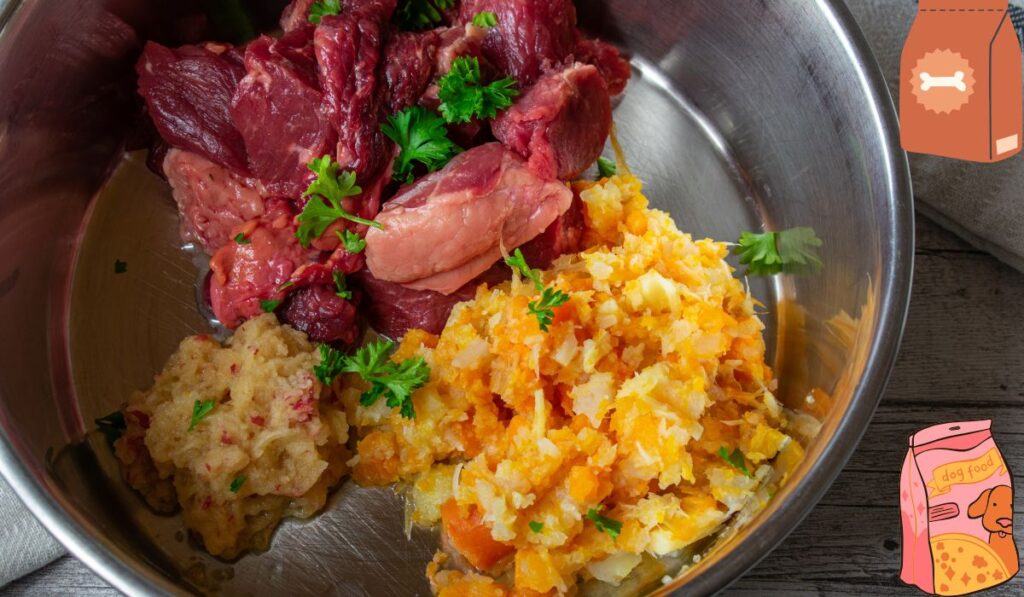
B. Specific Recipes
Now, let’s get cooking with some tail-wagging recipes!
1. Lean Ground Beef and Rice
This recipe is perfect for pups who love beef. Here’s what you’ll need:
- 1 pound lean ground beef
- 2 cups cooked brown rice
- 1 cup chopped carrots
- 1 cup green beans
- 2 tablespoons olive oil
Cook the beef in a pan until it’s no longer pink. Mix in the cooked rice, carrots, and green beans. Add the olive oil and stir it all up. Let it cool before serving it to your hungry hound.
2. Chicken and Vegetable Mix
If your dog is more of a chicken fan, try this recipe:
- 2 pounds of boneless chicken breast
- 1 cup cooked quinoa
- 1 cup chopped spinach
- 1 cup diced sweet potato
- 1/4 cup pumpkin puree
Cook the chicken in a pot with some water. Once it’s done, shred it up. Mix in the cooked quinoa, spinach, and sweet potato. Add the pumpkin puree for some extra fiber. Your pup will be licking their bowl clean!
3. Turkey and Sweet Potato Blend
Here’s a tasty turkey recipe that’ll have your dog begging for seconds:
- 1 pound ground turkey
- 1 cup mashed sweet potato
- 1/2 cup cooked lentils
- 1/2 cup chopped zucchini
- 1 tablespoon fish oil
Cook the turkey in a pan. Mix in the sweet potato, lentils, and zucchini. Add the fish oil for some omega-3s. This meal is packed with protein and fiber. Remember, every dog is different. Some might have allergies or need special diets.
Always check with your vet before changing your pup’s food. When you are making homemade dog food, it’s super important to get the balance right. A study in the Journal of Nutritional Science found that many homemade dog food recipes don’t have all the nutrients dogs need. That’s why adding a multivitamin is so important. Here are some tips to keep in mind:
- Variety is key: Mix up the proteins, veggies, and carbs you use.
- Cook it right: Make sure meats are fully cooked to kill any bad bugs.
- Store it smart: Keep the food in the fridge and use it within a few days.
- Portion control: Don’t overfeed your pup, even if they give you those puppy eyes!
Making homemade dog food can be a great way to know exactly what your furry friend is eating. Plus, it’s fun to cook for your pup! Just remember to keep it balanced and check with your vet to make sure you’re meeting all your dog’s nutritional needs. So, grab your apron and get cooking! Your dog will thank you with lots of tail wags and sloppy kisses!
Tips for Preparing Homemade Dog Food
When you’re ready to whip up some homemade dog food, keep these tips in mind to make sure your furry friend stays healthy and happy!
A. Proper food safety and handling
Just like when you’re cooking for yourself, you need to be careful with your pup’s food. Here’s what to do:
- Wash your hands before and after handling ingredients
- Clean all surfaces and utensils with hot, soapy water
- Cook meats to safe temperatures (165°F for chicken, 160°F for ground beef)
- Keep raw meat separate from other ingredients
- Don’t leave food out at room temperature for more than 2 hours
Remember, dogs can get food poisoning too! A study in the Journal of Small Animal Practice found that raw diets can increase the risk of bacterial contamination, so be extra careful if you’re using raw ingredients.
B. Batch cooking and storage
Make life easier by cooking in big batches:
- Cook enough food for 1-2 weeks at a time
- Divide the food into portion-sized containers
- Refrigerate what you’ll use in 3-4 days
- Freeze the rest for up to 2 months
When it’s time to eat, just thaw a portion in the fridge overnight. Easy peasy! Some pet parents even use ice cube trays to freeze small portions for tiny pups.
C. Transitioning from commercial to homemade food
Don’t switch your dog’s diet overnight! It can upset their tummy. Instead:
- Day 1-2: 75% old food, 25% new food
- Day 3-4: 50% old food, 50% new food
- Day 5-6: 25% old food, 75% new food
- Day 7: 100% new food
Keep an eye on your pup during this time. If you notice any vomiting or diarrhea, slow down the transition. A study in the BMC Veterinary Research journal found that gradual transitions help prevent digestive issues. Some extra tips to keep in mind:
- Always follow recipes from a veterinary nutritionist
- Use a food scale for accurate measurements
- Add supplements as recommended by your vet
- Monitor your dog’s weight and energy levels
Making homemade dog food can be a great way to control what your furry friend eats. Just remember, it’s not as simple as sharing your dinner. With these tips, you’ll be on your way to becoming a doggy chef extraordinaire!
How to Supplement Homemade Dog Foods?
When it comes to keeping your furry friend in tip-top shape, sometimes their regular chow just doesn’t cut it. That’s where supplements come in handy. Let’s dig into some key add-ons that can give your pup a health boost!
A. Calcium sources
Your dog’s bones need calcium to stay strong. If you’re making homemade dog food, you might need to add some extra. Here are some good sources:
- Crushed eggshells: Just grind them up and sprinkle them on food
- Yogurt: A tasty treat that’s packed with calcium
- Canned sardines: Bones and all, these little fish are a calcium goldmine
A study in the Journal of Nutrition found that dogs need about 100 mg of calcium per kilogram of body weight daily. That’s like a medium-sized dog needing about a teaspoon of ground eggshell.
B. Omega-3 fatty acids
Omega-3s are like magic for your dog’s health. They can help with:
- Shiny coat and healthy skin
- Joint health
- Brain function
- Heart health
Good sources include:
- Fish oil: A popular choice for many pet parents
- Flaxseed: Great for vegetarian pups
- Algae oil: Another plant-based option
Research in the Journal of Veterinary Internal Medicine showed that omega-3s can help reduce inflammation in dogs with arthritis.
C. Multivitamins for dogs
Think of multivitamins as a safety net for your dog’s diet. They can fill in any nutritional gaps. Look for ones with:
- Vitamin A: For good eyesight
- B vitamins: For energy
- Vitamin C: To boost the immune system
- Vitamin E: For healthy skin and coat
A study in the Journal of Nutritional Science found that many homemade dog food recipes lack essential nutrients, making multivitamins a smart choice. Remember, always chat with your vet before starting any new supplements. Every dog is different, and what works for one might not be best for another. With the right additions, you can help your furry friend live their best, tail-wagging life!
Some Considerations and Precautions
When it comes to homemade dog food, there are some important things to keep in mind. Let’s chew over the key points:
A. Consulting with a veterinarian
Before you start cooking for your furry friend, have a chat with your vet. They know your pup best and can give you the lowdown on what’s best for them. A study in the Journal of Nutritional Science found that 95% of homemade dog food recipes online weren’t complete and balanced. Yikes! Your vet can help you avoid that pitfall.
B. Avoiding toxic ingredients
Some human foods are a big no-no for dogs. Here’s a quick list of things to keep out of your pup’s bowl:
- Chocolate: Can cause serious tummy troubles and even heart problems
- Grapes and raisins: These can hurt your dog’s kidneys
- Onions and garlic: Bad for your dog’s red blood cells
- Avocado: Contains persin, which can make dogs sick
- Xylitol: This sweetener can cause a dangerous drop in blood sugar
C. Monitoring your dog’s health and weight
Keep an eye on your furry friend’s waistline. Too much of even a good thing can lead to a chubby pup! Here are some tips:
- Weigh your dog regularly
- Take photos from above and the side to track changes
- Keep a food and exercise diary
- Check-in with your vet every 2-4 weeks during weight loss
Remember, a healthy pup is a happy pup! If you notice any changes in your dog’s energy, coat, or bathroom habits, give your vet a call.
Making homemade dog food can be a great way to show your furry friend some love. Just make sure you’re doing it right. With a little help from your vet and some careful planning, you can keep your pup healthy and tail-wagging happy!
Conclusion
Homemade dog food can be a real game-changer for your furry friend’s health when done right. It lets you control what goes into your pup’s bowl, avoiding fillers and preservatives. A study in the Journal of Nutritional Science found that dogs on fresh food diets had better digestive health and shinier coats.
But remember, balanced nutrition is key. Work with your vet to create a meal plan that meets all your dog’s needs. With the right mix of proteins, carbs, and veggies, plus any needed supplements, you can keep your best buddy healthy and tail-wagging happy. It’s a bit more work, but seeing your pup thrive makes it all worthwhile!
- 9 Types of Lovebirds (A Comprehensive Guide for Pet Bird Owners) - June 20, 2025
- Labrador Retriever: America’s Most Beloved Family Dog - June 9, 2025
- The Complete Guide to Indian Ringneck Parrots - June 9, 2025
